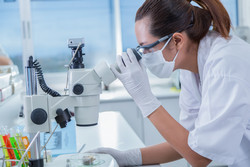Mechanical cues drive inflammation
To maintain homeostasis, normal tissue balance and function, cells need to receive and interpret signals from their immediate environment. These cues can be of mechanical or chemical nature and lead to a series of intracellular events that culminate in biological responses. The EU-funded MYOII-INFLAM (Non-muscle myosin II orchestrates the inflammatory response by integrating adhesive and cytokine signaling and the mechanical properties of the inflammatory microenvironment) project focused on the identification of novel molecular mechanisms that control the activation and function of non-muscle myosin (NM). NM is an actin-binding protein that uses the energy from ATP to facilitate cell adhesion and cell migration and to maintain tissue architecture. The goal of the MYOII-INFLAM proposal was to understand the regulation and function of the three NMII isoforms in the migration of cells implicated in inflammation. Researchers also studied NMII in cells that drive tissue repair and remodelling, such as fibroblasts, and vascularisation, such as endothelial cells. Results indicate that the three isoforms of NMII carry novel phosphorylations responsible for the observed cellular responses to extracellular stimulation. In addition, scientists discovered that the isoform IIB functioned in T cell activation and probably in inflammation. Overall, the generated information supports the importance of mechanical signals in inflammatory responses. The newly identified pathways could be exploited for the control of cellular mechanics in important cellular processes such as cancer cell migration, inflammation and stem cell-based cellular regeneration.







